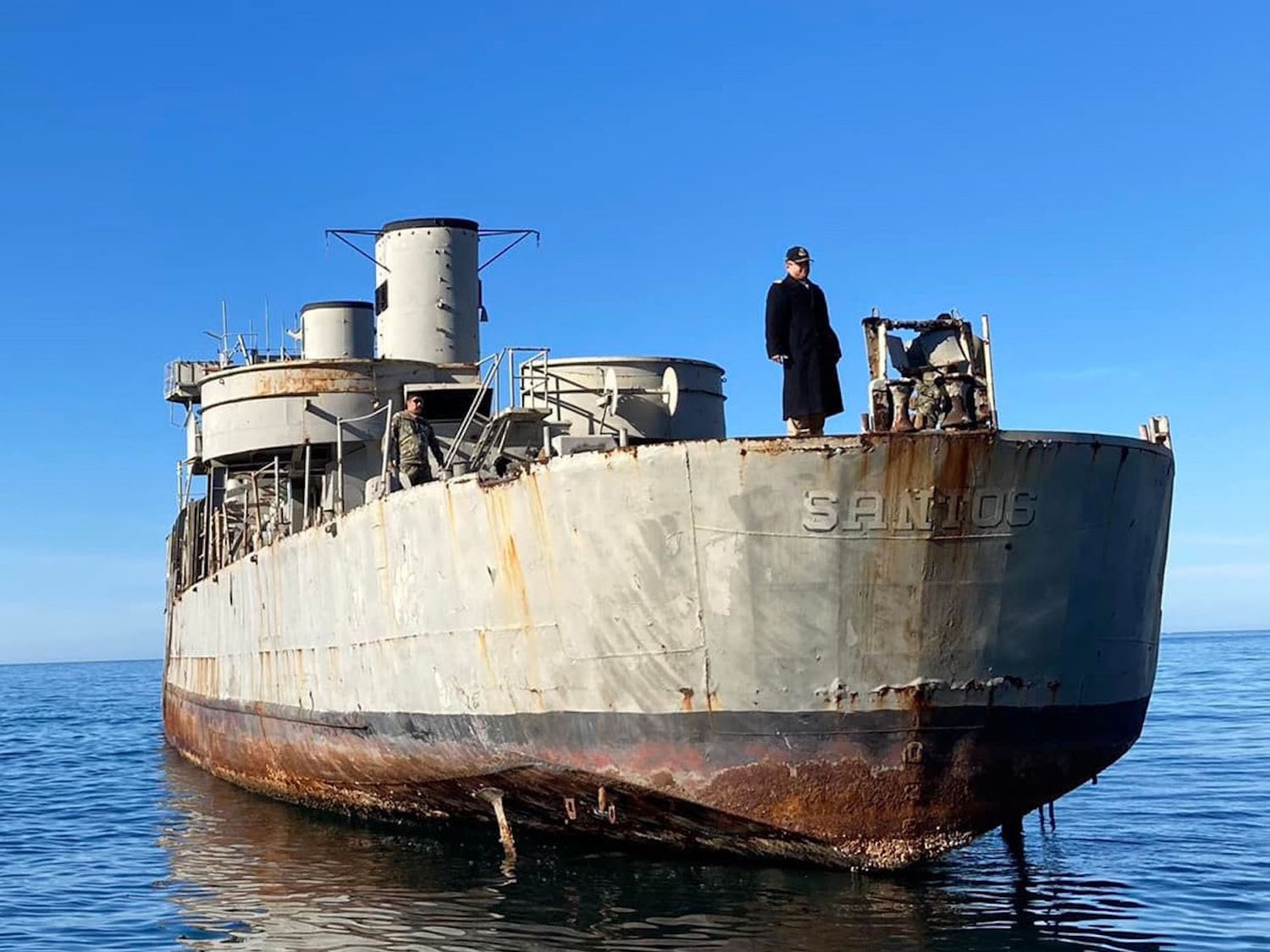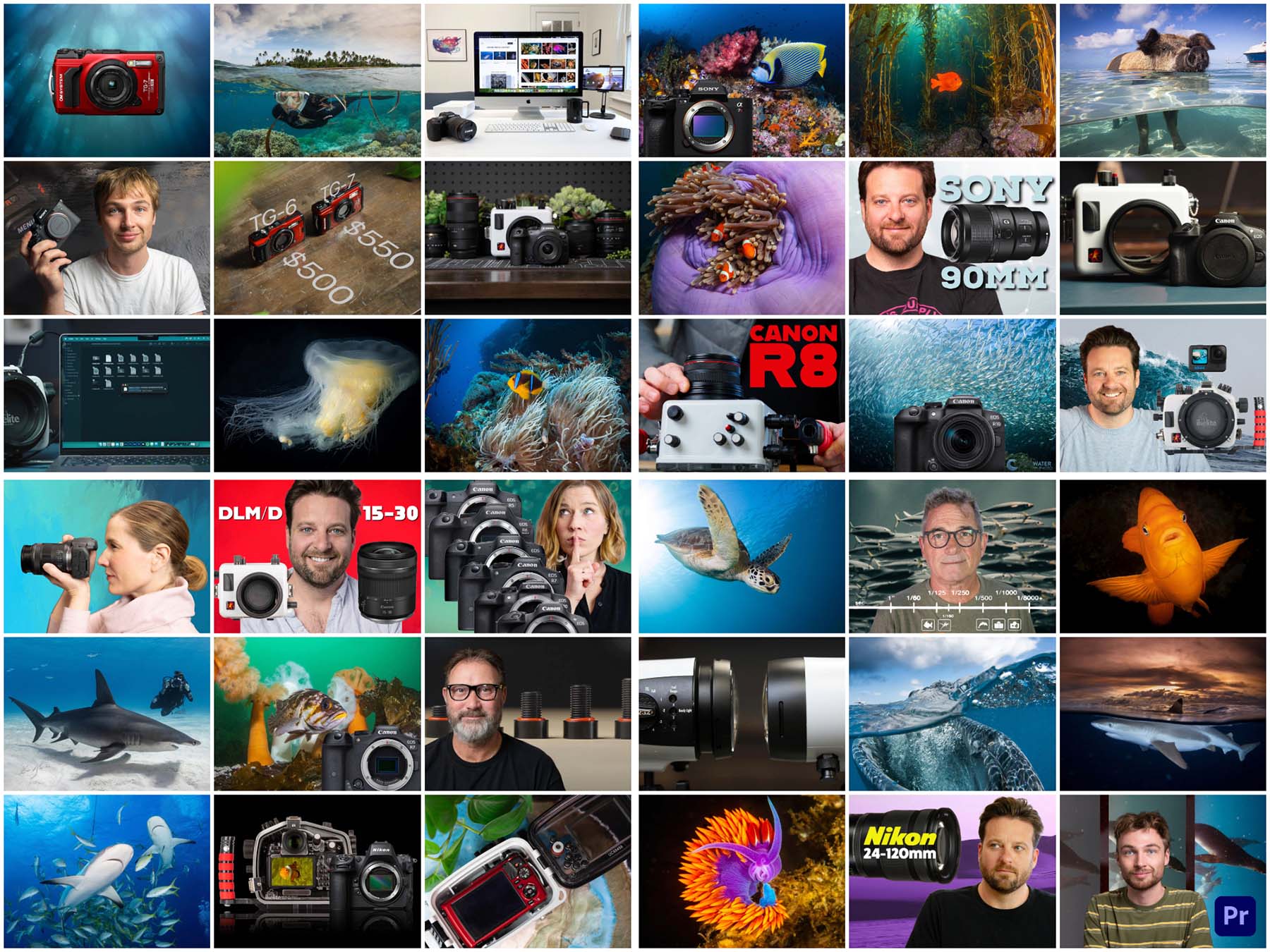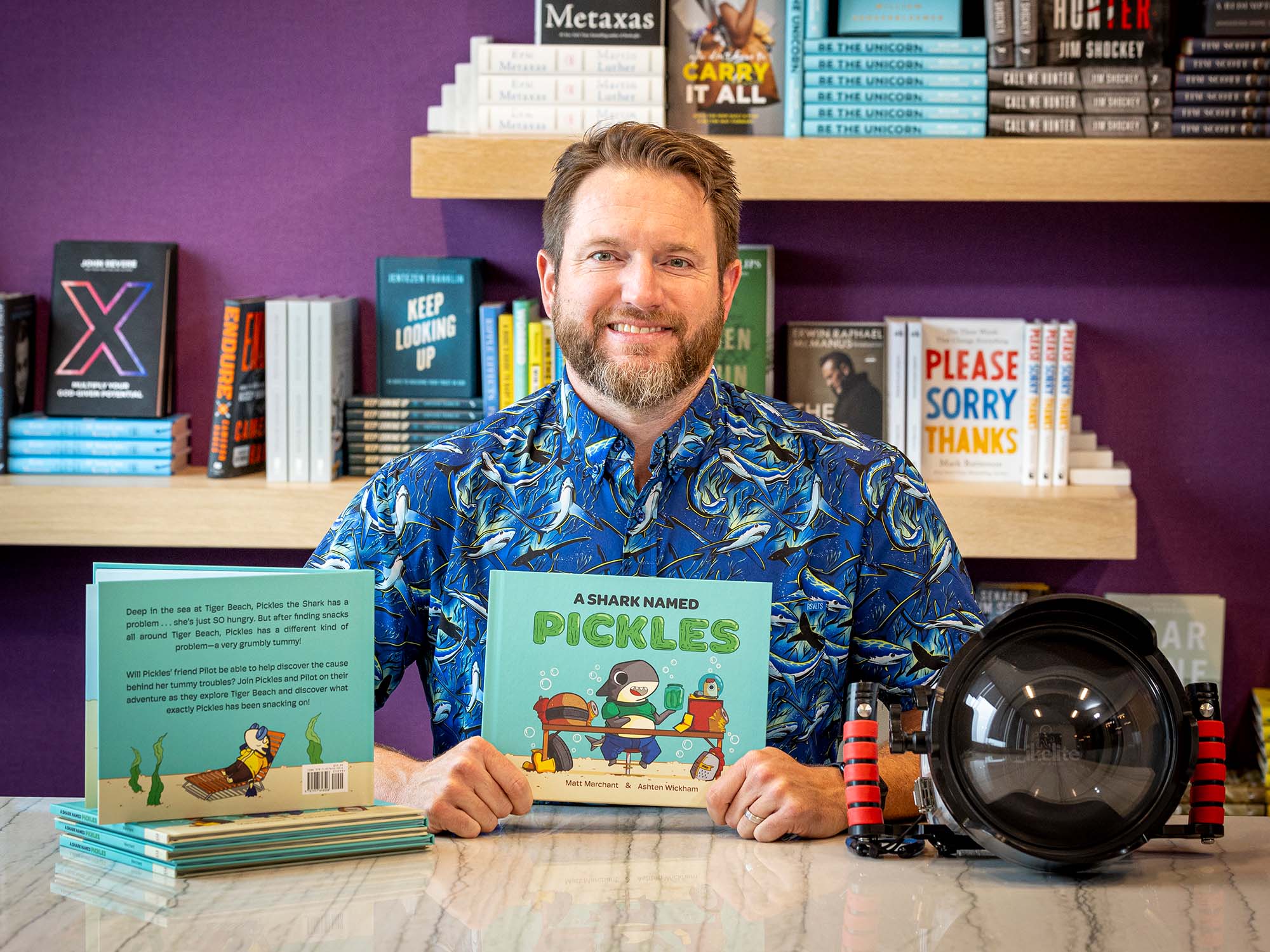By Philip Bonds
The telephone call El Mar Dive Center General Manager Feliza Rios received in early-September 2020 offered an exciting proposition. Completion of the project the caller inquired about was daunting, but it illustrates the positive outcomes that result when two determined women and a Mexican Navy captain join forces with community business leaders in an effort to sink a ship to benefit an ocean ecosystem and a community.

Tonia Foster and Feliza Rios provided leadership as they joined forces with a Mexican Navy captain and business leaders to complete sinking of what we now call the Santos Wreck. Image courtesy Tonia Foster at El Mar Dive Center.
Tonia Foster grew up in the business of scuba diving. Despite her work with ensuring the success of a dive shop that's been around for over sixty years, she sometimes jokingly refers to herself as a, "dive shop bum." In 1963, her father, Gene, started and built El Mar Dive Center in Mesa, Arizona, into a successful business. In 1987, Gene established El Mar's sister shop in San Carlos, Sonora. Engagement in activities that helped stimulate economic growth in both communities was a driving force behind these successful businesses. Tonia and El Mar staff members continue this approach with both shops today.
Feliza Rios, the general manager of the El Mar Dive Center in San Carlos, is a San Carlos native. Born and raised in San Carlos, Feliza was working at the San Carlos hotel that El Mar Dive Center used to house divers during San Carlos dive trips. In 1997, she took a bookkeeper position with El Mar's San Carlos Dive Center and successfully became a dive instructor in 2000. Feliza moved into the dive center's manager position in 2004.
That 2020 early-September telephone call Feliza received was from the owner of the Marina Tierra Hotel in San Carlos, Sonora. He asked if the El Mar Dive Center would be interested in working on a project to create an artificial reef by sinking a retired Mexican Navy ship. Along with other San Carlos business leaders, and Department of Tourism personnel, Feliza attended the first project meeting with San Carlos business leaders on September 20, 2020. A meeting with Mexican Navy Personnel immediately followed this first meeting. Feliza quickly became the spokesperson for El Mar's work with the project. El Mar's dive boat, the Piesquita, became the work platform for Navy personnel as they surveyed potential locations for the wreck.
Tonia is quick to credit Feliza's patience and determination with the success of the project. "Feliza has a presence that made her difficult to ignore as she worked with leaders of the San Carlos business community and Mexican government officials," Tonia stated. As the project developed, the expertise of these two women was heavily relied upon throughout the design and planning stages.
A major goal of the project was to place the wreck in a location and at a depth making it easily accessible and relatively safe for recreational scuba divers and free divers. Escape exits were cut into the ships compartments and signage was placed to direct divers to exits. Much of the planning and design work to make diving the wreck as safe as possible became Tonia's focus.

Navy Captain Benito Lopez Laura (pictured), like Feliza and Tonia, was integral to helping create the Santos Wreck artificial reef. Image courtesy Tonia Foster at El Mar Dive Center.
The paperwork required to sink a retired Mexican Navy ship was extensive and seemed endless. Fortunately, El Mar staff members and community business leaders had an ally. Mexican Navy Captain Benito Lopez Laura was as enthusiastic about completing the project as Feliza and Tonia, and other business leaders. Throughout the project, the team encountered significant obstacles, but continually pushed for completion of the project.
USS Gladiator was built and saw service during the Second World War. The ship and her crew earned two battle stars during the campaign to push the Japanese out of areas they had occupied in the Pacific Theater during the war. When the Korean Conflict began, the USS Gladiator was pressed into service again.
The Mexican Navy acquired the USS Gladiator in 1972 as one of sixteen WWII and Korean Conflict era Auk-class minesweepers purchased from the United States. It was initially commissioned as ARM Santos Degollado and put into service as a Valle Class patrol ship. During its service, the ship was re-designated several times before ending service with the Mexican Navy in 2007 as Ex Buque Santos ARM P106.

What was once a Mexican Navy ship is now a thriving artificial reef. Home to a variety of marine life and visited frequently by divers. Image © Philip Bonds
Rather than sending the Ex Buque Santos ARM P106 to the scrap heap, the Mexican Government and San Carlos business community embarked on an extensive cleanup project to make the ship into an artificial reef. The project literally involved scrubbing the ship inside and out from top to bottom in an effort to remove fuel and oil residue as well as the removal of equipment that could cause potential pollution issues. El Mar Dive Center along with other stakeholders from the San Carlos business community provided funding for the cleanup work on the ship. Needless to say, cleanup work was an expensive proposition.
On March 3, 2022, explosive charges placed by a Mexican Navy demolition team sent the Ex Buque Santos to the bottom. The ship settled onto the sandy bottom in an upright position. As testament to how thoroughly the ship was cleaned, marine life immediately began taking hold.
Tropical Storm Kay sent a storm surge up through the Gulf of California in September 2022. This surge impacted the Ex Buque Santos. An assessment of the wreck following the storm revealed that the storm literally broke the bow off ship and moved it a short distance away from the remainder of the wreck. While, there were initial concerns about potential negative consequences of this storm event, it is worth noting that opening the wreck has had positive impacts. Opening the wreck's interior appears to have accelerated the abundance of marine life taking hold on the outside and inside the ship.

Though she calls herself a "dive shop bum" Tonia Foster helped create a successful artificial reef and she was the brains behind many of the safety features on the wreck that make it safe a dive destination for scuba divers and freedivers alike. Image © Philip Bonds.
The success of the Ex Buque Santos project is testament to the positive impact that result when two determined women and a navy captain join the efforts of community business leaders to accomplish a difficult project for the benefit of the business and diving communities. Of course, there is an adage about success breeding success. Feliza, Tonia and Captain Laura are not done yet. Along with San Carlos business leaders, they are currently pursuing additional ship sinking projects in the San Carlos area. The new project proposals could result in placement of two to three additional retired Mexican navy vessels in deeper water. Stay tuned-in!
Diving in San Carlos, Sonora
If you would like to visit the SCUBA diving mecca of San Carlos, Sonora, it is a quick 262-mile drive south of Nogales. Three San Carlos dive shops operate dive boats and provide services. San Carlos offers an excellent accommodations and a wide variety of restaurants. Dive shops from the Phoenix and Tucson, Arizona, regularly schedule multi-day dive trips to San Carlos.

Philip Bonds has been photographing wildlife for over forty years. He is based in southern Arizona. In addition to his work as an award winning photographer and writer, Philip is an active and enthusiastic member of the Desert Dolphins Scuba Diving Club's Education Committee. The club is one of the oldest scuba diving clubs in the United States. A small portfolio of his work and information about his book, Dancing with Sea Lions, is available on his website, www.cortezbluephotography.com
Additional Reading
Customer Photos | Philip Bonds Diver, Writer, Educator
The Brutal Impact of Fisheries on Sea Lions in Mexico
Illuminating the Technology of Coral Reef Research
Where Postage Stamps, Cancer Research, and the Smithsonian Museum Meet













